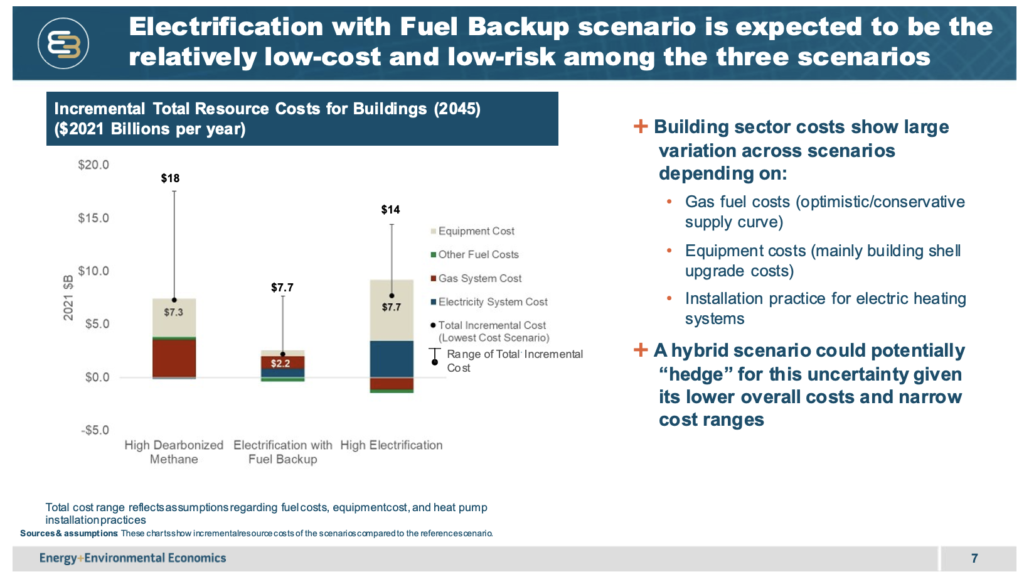Achieving net zero emissions in building heating and hot water is perhaps the greatest challenge of all the sector transitions necessary to meet Maryland’s greenhouse gas reduction targets. To reach net zero by following a high electrification strategy requires that a large majority of existing buildings convert from fossil fuel equipment to electric heat and hot water systems, and install better insulation. These changes often come with high upfront capital costs and increased energy costs resulting in long or non-existent payback periods. These changes can also require upgrades to the electric transmission and distribution capacity of utilities to meet increased peak electric demand.
During the 2021 interim, the Maryland Department of Environment’s climate consultant evaluated the costs of three different approaches that achieved net zero emissions in the building sector by 2045. The High Electrification Scenario on the right of the chart was estimated to cost between $7.7 billion and $14 billion per year.(1)

The High Electrification option would constitute a major expense for the state.
The $7.7 billion, low-range cost estimate is roughly equivalent to the $7.9 billion that local real estate property taxes generated in FY2020. The $14 billion, high-range cost estimate is more than the $13.7 billion generated by local income and real estate property taxes combined in FY2020.(2)
________
1. Maryland Buildings Decarbonization Study Analysis, Revised Final Results_E3, 9-16-21
2. Fiscal Year 2020 Report of County Budgets, Tax Rates and Selected Statistics, Maryland Association of Counties